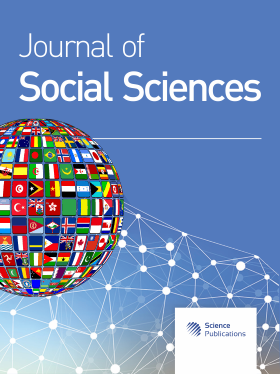Appropriate Model for Zoning Local Fish Conservation in front of Buddhist Temple on the Bank of the Chi River by Sustainable Community Participation
Abstract
Problem statement: The fresh water fish in The Chi River was a major source of food of people living in this area. The objectives of this research were: (1) to study the historical background, current situation and problems of local fish conservation in front of The Chi River by community participation and (2) to find the appropriate model for zoning the local fish conservation on the bank of The Chi River by sustainable community participation. Approach: The research area in Esan Region for 6 provinces including: Chaiyapum, Mahasarakam, Kalasin, Roi-ed, Yasoton and Ubon-rachatani. The samples as informants were selected by Purposive Sampling including 27 experts, 81 practitioners and 27 general citizens. The instruments for collecting data consisted of The Structured Interview and Non-structured interview, participatory observation and non-participatory observation, focus group discussion and conference. Data were classified into groups based on the studied issues. They were investigated by Triangulation Technique and analyzed based on the specified objectives. The findings were presented by Descriptive Analysis. Results: For the research findings found that the fish species conservation in Chi River caused by the initiation of bureaucratic divisions based on the needs for increasing the number of fish in natural water origin where it began to decrease as well as the need of community by seeing the pattern in conservation of fish species from other areas leading by the abbot and community leaders. The public work sectors and politicians provided facilitation and support. Now, the water origin as the zone of local fish conservation called “Shelter Area” was clearly allocated. The social measure or community regulation was determined in order to be followed. The religious beliefs, tradition, or ritual were administered. There was thoroughly information service. The organization from community village was established. Participatory management was performed. For the appropriate model fro zoning, there were 3 parts: (1) The internal factor caused zoning local fish conservation in front of Buddhist Temple, (2) The external factor facilitated and supported the local fish conservation based on academic principles and (3) the implementation process with pattern, sequence and implementation based on the efficient administration and management system. Conclusion/Recommendations: The research fin dings of this study could be appropriately, efficiently and effectively sustainable used as a guideline for zoning local fish conservation in front of Buddhist Temple on the bank of Chi River as well as other rivers in the future.
DOI: https://doi.org/10.3844/jssp.2009.411.415

- 4,256 Views
- 2,424 Downloads
- 0 Citations
Download
Keywords
- Appropriate
- conservation
- Buddhist
- temple
- sustainable
- community, participation
- Chi River
